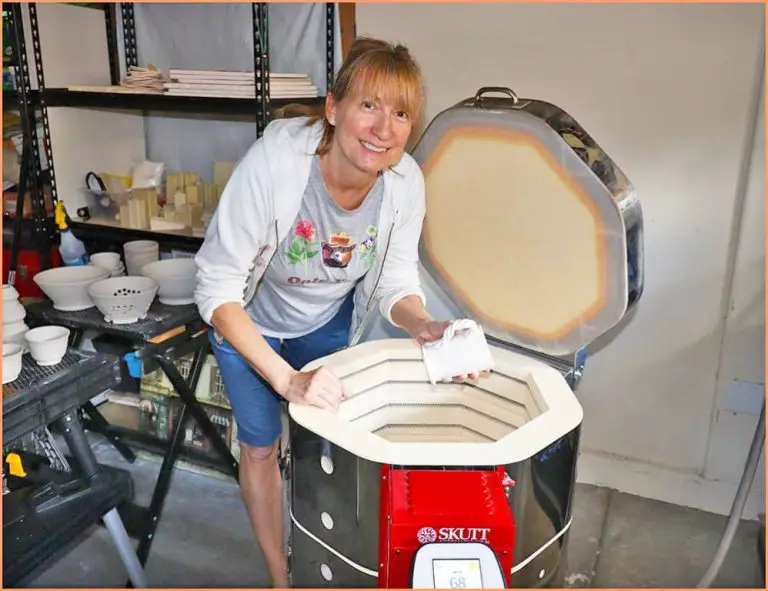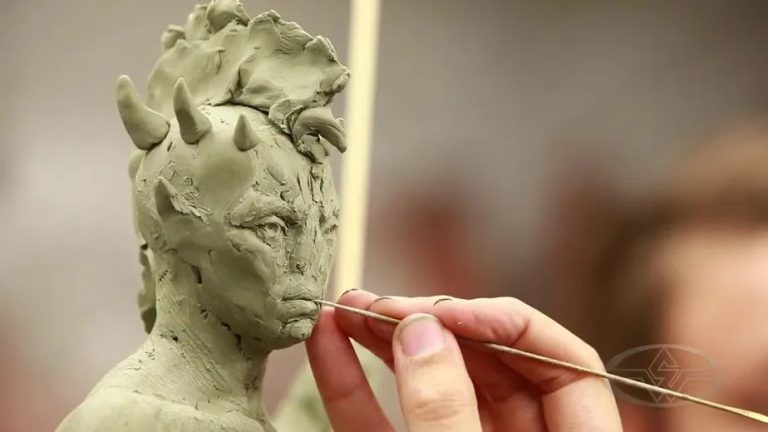How Do You Make Clay Weather Resistant?
Making clay weather resistant involves a multi-step process of cleaning and drying the clay thoroughly, applying protectants like slip, glaze or sealant, allowing for proper drying time, and using maintenance practices. The goal is to create a durable, waterproof barrier that prevents moisture absorption, resists fading from UV exposure, and withstands other environmental factors. With the right combination of clay treatment and topcoat, sculptural and decorative clay items can be displayed outdoors and retain their structural integrity and aesthetic beauty over time.
Determine the Type of Clay
Different types of clay have different properties that affect their ability to withstand weathering. The main types of clay used in pottery and sculpture are earthenware, stoneware, and porcelain.
Earthenware is the most porous and absorbent type of clay. It’s prone to damage from freezing and thawing cycles when used outdoors. Earthenware glazes also tend to be less durable.
Stoneware is denser and less porous than earthenware, making it more resistant to weathering. However, unglazed stoneware can still absorb water. With a good glaze, stoneware can stand up well outdoors.
Porcelain is the least porous type of clay. It’s fired at a higher temperature, creating a vitreous, glass-like surface. Porcelain is extremely durable and weather resistant. When glazed, it can withstand years of outdoor exposure.
Clean and Dry the Clay Thoroughly
One of the most important steps in making clay weather resistant is to thoroughly clean and dry the clay before applying any protective sealants or coatings. Any moisture or dust left on the clay can prevent sealants from properly bonding and curing. Here are some tips for properly cleaning and drying clay:
– Clean the clay thoroughly with a soft cloth to remove any dirt or dust on the surface. Make sure to get into any small crevices and details.
– Use a soft brush, compressed air, or rinse with water to remove any stubborn debris. Avoid rough scrubbing that could scratch the clay surface.
– Allow the clay to air dry fully, which could take 24-48 hours depending on climate and thickness. Clay should be bone dry throughout before sealing.
– Avoid applying any heat, which could cause cracks or fissures. Air drying is best.
– Wipe down with a tack cloth before sealing to pick up any remaining dust particles.
Taking the time to properly clean and dry the clay is a critical first step to ensure sealants and protective coatings adhere fully, resulting in long-lasting weather resistance.
Apply a Clay Slip
To make your clay sculpture fully weather resistant, apply a clay slip. A clay slip is liquid clay thinned with water to the consistency of cream. Mix clay powder into water and stir until it has a milky look. Clay slips act like glue to seal cracks and pores on the surface of sculptures.
Before applying the slip, make sure the clay surface is clean. Using a soft brush, apply the clay slip generously to all surfaces of the sculpture. Work the slip into crevices to fill any pores. Let the slip dry completely before applying a sealant or glaze. The clay slip seals the raw clay beneath, preventing moisture from penetrating and providing an adhesive base for finishes.
Use a Clear Glaze
Applying a clear glaze is one of the most effective ways to make clay weather resistant. Glazes create a protective barrier against water damage by sealing the clay surface. The glaze fills in pores and creates a smooth, non-porous surface that water beads up on rather than absorbing into the clay.
When choosing a glaze, look for ones specifically made for outdoor use. These are designed to expand and contract at the same rate as the clay to prevent cracking or peeling. A high gloss glaze will offer slightly better protection than a matte or satin finish.
Apply at least two thin, even coats of glaze according to the manufacturer’s instructions, allowing proper drying time in between. Use a soft brush to prevent brush strokes. Make sure to coat all surfaces evenly, including the bottom of sculptures or pots. Firing the clay after glazing further solidifies the glass-like surface.
Over time, the glaze may start to lose its luster from exposure to elements. Re-applying a fresh coat of glaze whenever it appears faded or worn can easily revive the protective qualities.
Choose a Sealant
To make clay fully weather resistant, choosing the right sealant is key. There are a few good options that will further protect the clay:
- Varnish: An exterior or marine grade varnish will seal and protect the clay. Apply multiple thin coats for best results.
- Wax: Beeswax, carnauba wax or paraffin wax can all be used. The wax will seal the clay and add a nice finish.
- Epoxy: A 2-part epoxy resin will provide a durable, waterproof seal on the clay. Make sure to apply according to manufacturer instructions.
Whichever sealant you choose, apply to all surfaces of the clay piece according to the manufacturer’s directions. Allow proper drying time between coats to ensure full weather protection.
Seal All Surfaces
It is critical that you completely seal your entire clay piece, both inside and out, to provide full weather protection. This ensures moisture cannot penetrate the clay even in hard to reach spots like small crevices or the bottom surface. Use a paintbrush, sponge, or rag to liberally apply your sealant of choice over every square inch of the clay’s surface and allow proper drying time. Be thorough and patient, applying 2-3 coats of sealant to areas like the top or sculpted elements that will bear the brunt of weathering. Taking the time to properly seal all surfaces makes your clay art truly impervious to the elements.
Allow Proper Drying Time
After applying sealants, glazes, and top coats, it is crucial to allow adequate drying time before exposing clay items to the elements. Most sealers and finishes require 24-48 hours of cure time in normal conditions before they reach full water resistance. Be sure to follow the specific manufacturer’s instructions for dry times of any products used.
Rushing the drying and curing process can greatly undermine all your prior weatherproofing efforts. If sealants, glazes or top coats are not fully cured, moisture can still penetrate the clay even if it has been treated. Have patience and allow all layers to fully harden before placing your clay piece outside.
Also be aware that drying times may need to be extended if there is high humidity or low temperatures. The conditions must allow the sealer to properly cross-link and bond to the clay. If unsure, it’s always better to wait a little longer rather than risk weather-related damage. Let each layer fully cure for peace of mind before exposing your clay artwork to the elements.
Apply a UV Resistant Top Coat
One of the most important steps for making clay weather resistant is to apply a UV resistant top coat. This adds a protective barrier that shields the clay from the sun’s ultraviolet rays which can cause fading, discoloration, and degradation over time.
There are specially formulated acrylic top coats made for outdoor use on clay that are clear and provide UV protection. Make sure to choose a top coat designed for exterior use, as indoor top coats will not hold up to the elements.
Apply at least two thin, even coats of the UV resistant top coat per the manufacturer’s instructions, allowing proper drying time between coats. The top coat seals the clay and creates a smooth surface that repels water and locks out UV rays.
Top coats need reapplied every one to two years. Check for any cracks or worn spots annually before the weather changes. Address these by lightly sanding and adding fresh top coat to maintain the protective barrier.
With a UV resistant top coat, clay artworks and sculptures can better withstand sun, rain, snow and other outdoor conditions while retaining their original vibrancy.
Regular Maintenance
To ensure your clay sculpture remains weather resistant over time, periodic reapplication and maintenance of protective coatings is crucial. Depending on the sealants used, reapply a UV resistant top coat every 1-2 years. Check for any cracks or damage to the surface regularly. If the protective finish starts wearing away or thinning, apply additional coats of sealant. For clay pieces displayed outdoors, a bi-annual renewal of the protective layers is recommended. Resealing and recoating ensures moisture, sun damage, freezing temperatures, and other elements do not penetrate the clay and compromise the structure. With proper maintenance and reapplication of finishes every couple of years or as needed, you can keep your clay sculpture looking great while guarding against weathering and deterioration.



